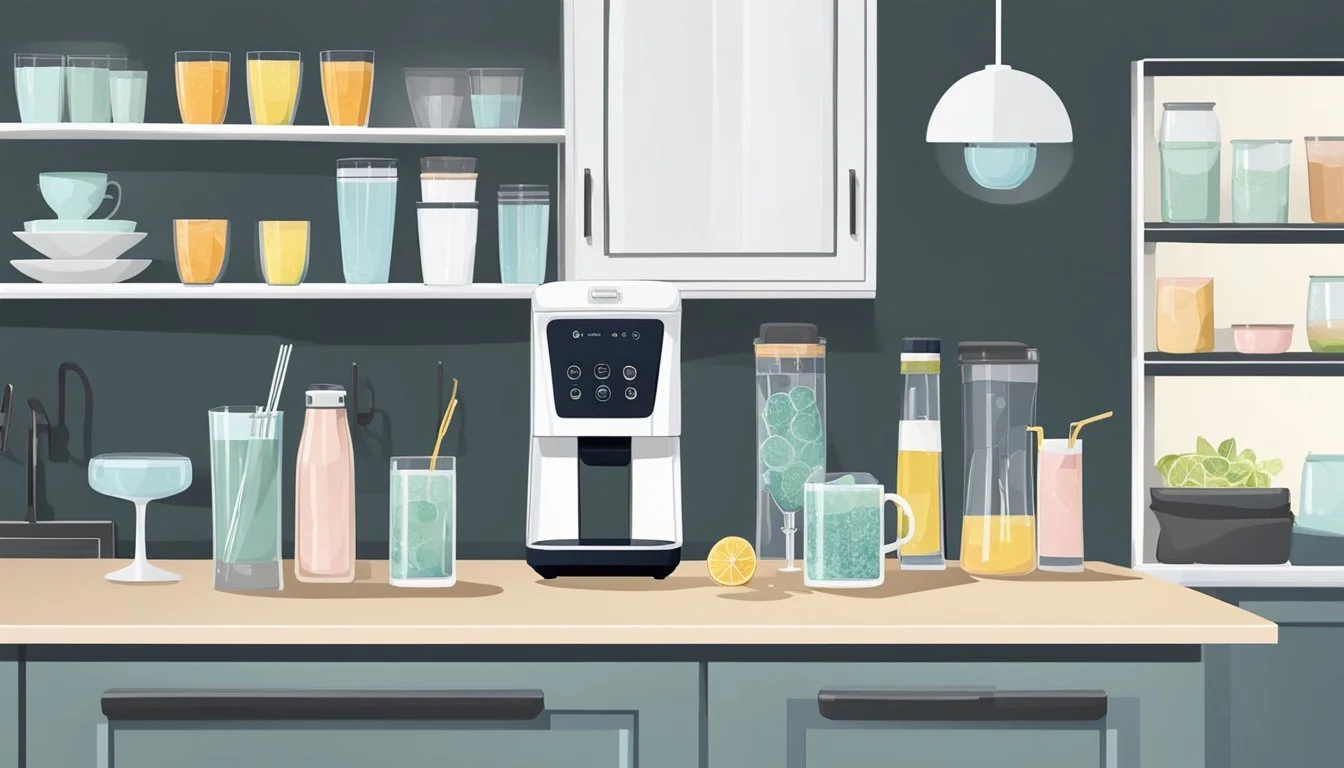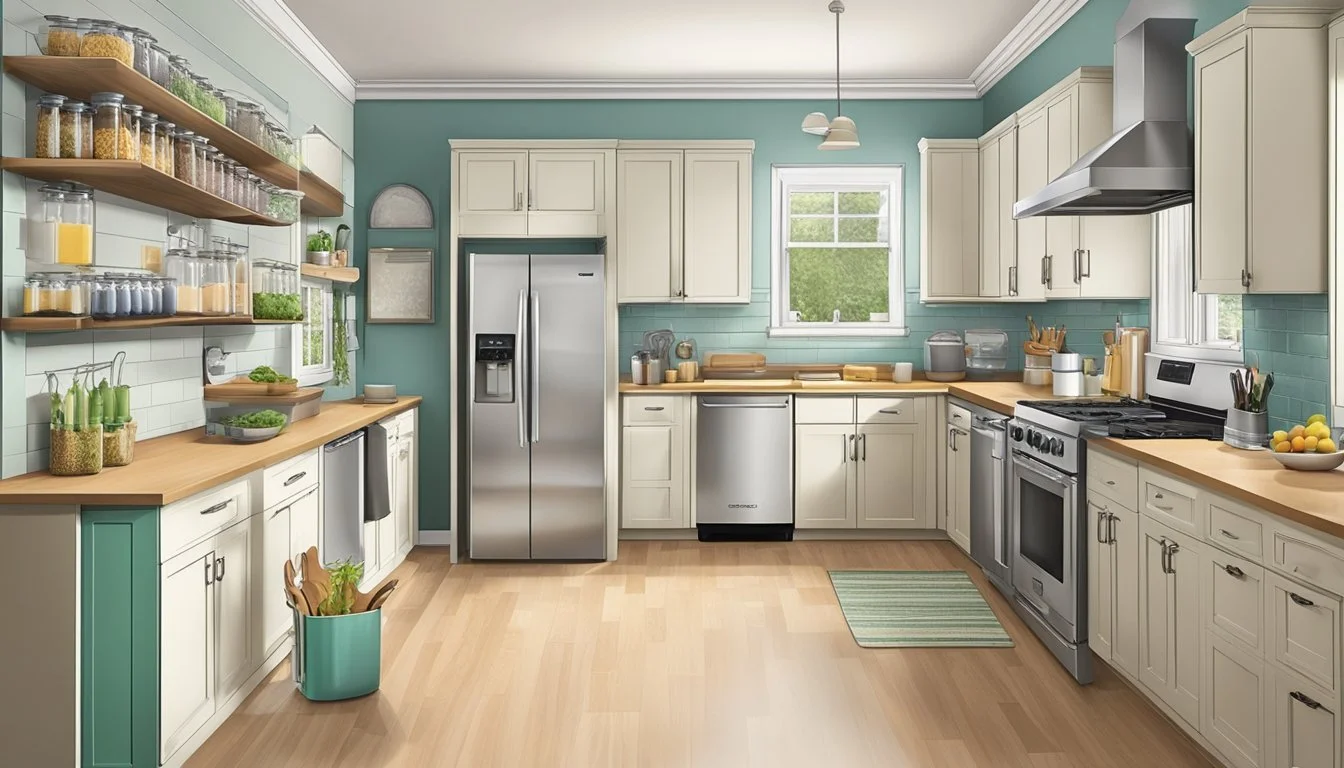5 Tips for Organizing Your Kitchen for a Dinner Party with a Soda Maker
Streamline Your Space for Effortless Entertaining
Organizing a kitchen for a dinner (What wine goes well with dinner?) party requires equal parts strategic planning and creative flair, especially when including a feature like a soda maker. A well-arranged kitchen not only facilitates a smoother cooking experience but also enhances the overall enjoyment of the event for both the host and the guests. As any seasoned entertainer knows, the key to a successful dinner party lies in the details—from the preparation of ingredients to the way the flatware is presented.
Incorporating a soda maker into the event adds a fun and interactive element to the gathering, allowing guests to customize their drinks to their liking. To ensure seamlessly integrating this appliance into the festivities, it is vital to have a thoughtfully laid out kitchen space. This includes preemptively considering the flow of traffic, the accessibility of ingredients and utensils, and the efficiency of clean-up afterward. Keeping the kitchen clutter-free and organized not only contributes to a more aesthetically pleasing space but also to a more functional one.
Planning for Your Dinner Party
Proper planning is the cornerstone of any successful dinner party. An organized kitchen with a well-constructed menu and a thoughtfully arranged beverage station featuring a soda maker are pivotal for seamless entertaining.
Developing the Dinner Party Menu
Crafting the party menu requires careful consideration of fresh produce, a balance of seasonings, oils, and vinegars, as well as accommodating guests' dietary preferences. One should begin by selecting the central dishes, ensuring a variety of textures and flavors, and confirming that the ingredients needed for each are readily available:
Meats/Vegetarian Options: Consider the preferences and dietary requirements of your guests and include both meat-based and vegetarian options.
Fresh Produce: Incorporate seasonal and fresh produce to ensure the highest quality and flavor.
Seasonings, Oils, and Vinegars: Stock up on essential seasonings, high-quality oils, and diverse vinegars for dressings and flavor enhancement.
Lemons: Have fresh lemons on hand for zest and juice, which can brighten up any dish.
When testing recipes, keep in mind the efficiency of preparation and the potential need for special equipment like glass jars for storage or marinating ingredients.
Essentials of Beverage Station Setup
The beverage station should be an inviting area where guests can assemble their own drinks with ease. Essential components of a successful beverage setup include:
Soda Maker: Ensure the soda maker is ready with carbonation cylinders charged and operational.
Bar Cart/Rolling Cart: Utilize a bar cart or rolling cart for mobility, arranging it with necessary tools like bottle openers, ice buckets, and garnishes.
Beverage Cabinet: Stock a beverage cabinet with a selection of teas, wine from the wine rack, and diverse glassware appropriate for the drinks offered.
Water Bottles: Provide water bottles for hydration options. Consider flavored water with cucumber or citrus slices from lemons for a refreshing twist.
Tea Selection: A range of teas should be available for guests preferring a non-alcoholic or warm beverage alternative.
Organizing the ingredients and equipment beforehand streamlines the process, ensuring the host can enjoy the event alongside their guests.
Maximizing Kitchen Space
Effective kitchen organization can transform a small kitchen into a functional hub capable of hosting a dinner party even when complemented by a soda maker. Implementing strategic organization and clever storage solutions allows for clear countertops and an orderly environment.
Strategies for Small Kitchen Organization
In a small kitchen, every inch counts, so maximizing countertop space is essential. Countertop real estate can be preserved by:
Utilizing Drawer Dividers: These help keep utensils and gadgets neatly separated and easily accessible.
Employing Lazy Susans: Perfect for corner cabinets or spacious countertops to rotate and reach items effortlessly.
Opting for Pull-Out Drawers: Installed in lower cabinetry, they allow easy access to items in the back without straining.
Kitchen Islands, if space permits, can offer valuable workspace and double as a mini pantry with storage underneath for larger items or appliances like the soda maker.
Clever Storage Solutions
Maximizing kitchen space also means making smart use of vertical areas and hidden storage opportunities.
Installing Cabinet Risers: These create double the space in upper cabinetry, allowing for an organized stacking of dishes and glasses.
Utilization of Wall Space: Mounting shelves or a pegboard frees up cabinet space and offers an at-a-glance selection of kitchen tools.
Implementing Hidden Storage: A toe-kick drawer tucked under cabinetry is a hidden gem for flat items like baking sheets.
By incorporating these focused strategies and storage solutions, one can maintain a clutter-free and functional kitchen ready for any gathering.
Organizing Kitchen Items
Effective organization of kitchen items is critical for hosting a dinner party with a soda maker. The key is to declutter efficiently while keeping essentials within reach and properly stored.
Effective Use of Containers and Dividers
Using clear storage containers and dividers can greatly improve the functionality of kitchen drawers and cabinets. Tupperware and other plastic containers should be neatly stacked by size, with lids organized separately for easy access. Glass jars with labels can be used for spices and dry goods, allowing for both visibility and a streamlined aesthetic. Divider inserts are excellent for organizing utensils neatly within drawers.
Arranging Cookware and Utensils
Strategically place pots and pans near the cooking zone for convenience. Utensil holders next to the stove can keep important tools at hand. It's beneficial to have specific locations for items frequently used together, such as grouping a soda maker with its corresponding bottles and flavors on open shelving or a dedicated kitchen cart.
Keeping Countertops Clutter-Free
The kitchen countertop should maintain a balance between accessibility and tidiness. Limit the number of small appliances on the counter, opting instead for cabinet storage. Introduce a label maker to identify storage for infrequently used gadgets, ensuring they are organized behind closed doors. Using vertical space with hanging baskets can also free up valuable counter real estate.
Tips for Organizing Consumables
Regularly sort through fresh produce and other perishables to keep the pantry and fridge clutter-free. Designate areas in the pantry for specific groups like snacks, baking ingredients, and drinks. Use shallow deli containers for fridge organization, and reusable plastic bags with labels for grouped smaller items, like cheese or deli meats. Labeling ensures that every item has its place and can be both found and put away with ease.
Decor and Convenience
In preparing for a dinner party, the kitchen becomes a focal point not just for cooking but also for social interaction. Thoughtful use of open shelving and wall space, along with touches of greenery, can create an inviting ambiance while keeping essentials within reach.
Using Open Shelving and Wall Space
Open shelving in the kitchen serves both practical and aesthetic purposes. It provides easy access to dishes, glasses, and utensils, facilitating a smooth flow during the party. For a dinner party featuring a soda maker, one might display an array of syrups, glasses, and other soda-making essentials prominently on these shelves. They should consider organizing items by type or color, placing frequently used items on lower shelves for convenience. Decorative items like cookbooks or vintage soda bottles can add a personal touch while occupying wall space creatively.
Practical Items for Open Shelving:
Syrups and mixers for the soda maker
Glasses and stemware
Plates and bowls
Decorative Items for Open Shelving:
Cookbooks
Vintage soda bottles
Artistic kitchen gadgets
DIY shelving can be tailored to fit any kitchen space, offering a custom solution for organizing and decorating. The inclusion of hooks or hanging rails beneath shelves can help to utilize vertical space effectively, allowing pots and pans to hang within arm's reach. This setup not only saves cupboard space but also contributes to a professional kitchen look.
Incorporating Plants and Natural Elements
Plants add life and vibrancy to the kitchen and are a natural way to decorate the space. Strategically placing potted herbs or small indoor plants on shelves or countertops not only looks appealing but can also be practical, giving guests the opportunity to pick fresh garnishes for their drinks. They can use fresh produce, displayed in attractive baskets or bowls, as functional decor that reinforces the theme of fresh and homemade.
Suggestions for Plants and Natural Elements:
Potted culinary herbs (such as basil, mint, or rosemary)
Fresh produce in baskets (like lemons, limes, or mint leaves for the soda maker)
Decorative vases with seasonal flowers
Utilizing natural elements such as wood, stone, or bamboo in cutting boards, utensil holders, and DIY projects can further reinforce a connection to nature and create a warm, earthy atmosphere in the kitchen. The key is to balance functionality with style, ensuring that the decor enhances both the visual appeal and the efficiency of the space during the dinner party.
Final Touches Before the Event
As the dinner party approaches, attention to detail can make a significant difference. It's essential that everyday items remain accessible and that the kitchen is decluttered and cleaned to welcome guests with ease and efficiency.
Ensuring Accessibility of Everyday Items
In the flurry of dinner party preparations, it's crucial to ensure that essential everyday items are still within reach. She should consider the flow of the kitchen and make sure that tableware, plates, and dish towels are easily accessible. Here's a quick checklist:
Plates: Store them on an open shelf or plate rack near the dining area for effortless serving.
Dish Towels: Hang towels on hooks or handles close to the sink for quick access during the event.
This organization allows the host to seamlessly transition between cooking and entertaining without disrupting the party's pace.
Final Decluttering and Cleaning
The last step before guests arrive is a thorough decluttering and cleaning of the kitchen. This involves organizing ideas that encompass both the kitchen's aesthetics and function. Effective storage solutions should be in place to present a tidy and inviting space. Here are some specific tasks:
Countertops: Clear all non-essential items, leaving only decorative pieces or practical tools like the soda maker.
Linens: Freshly laundered linens should be folded neatly or placed where they'll be used.
A decluttered kitchen not only looks better, but it also makes it easier to move around and serves as a more welcoming environment for guests.






